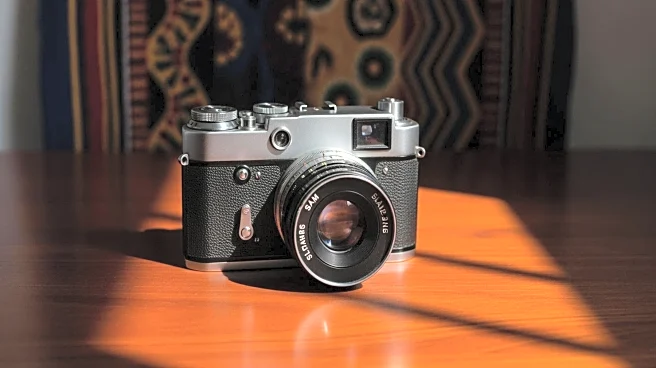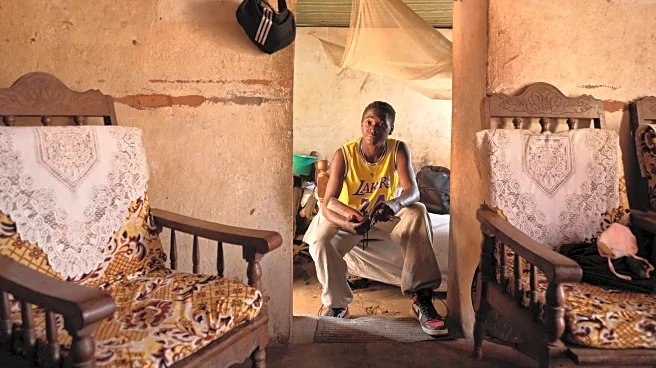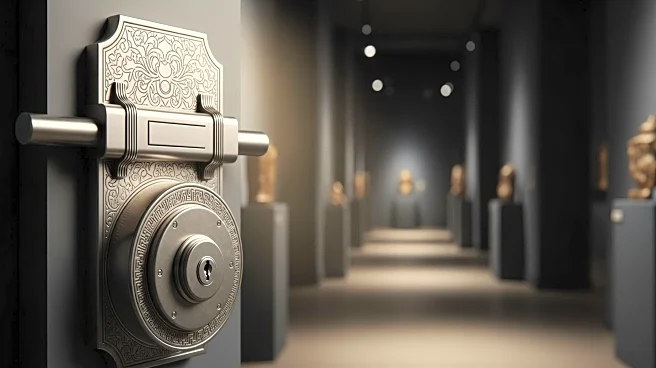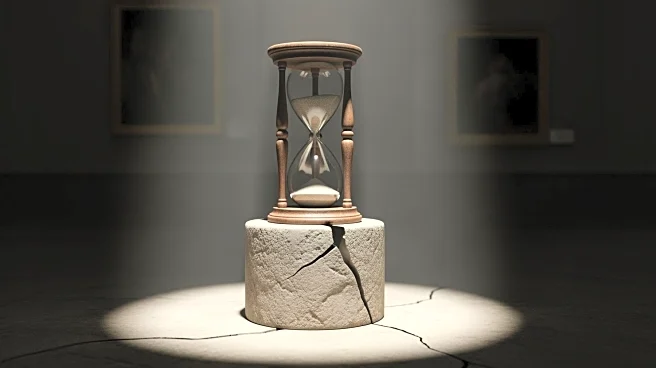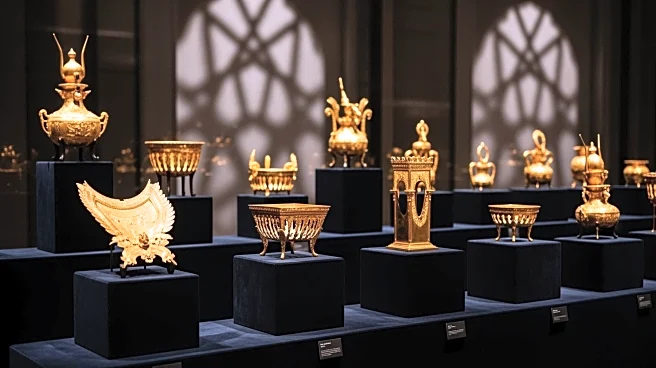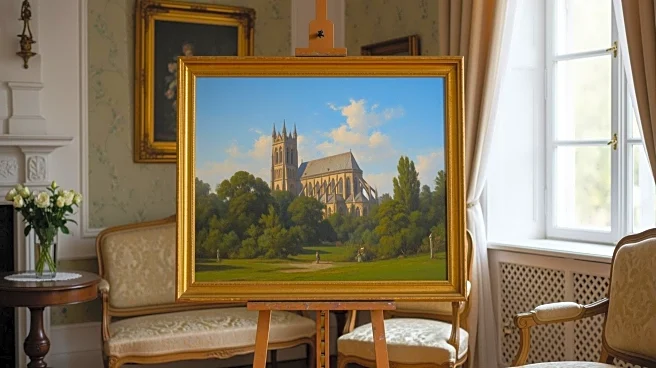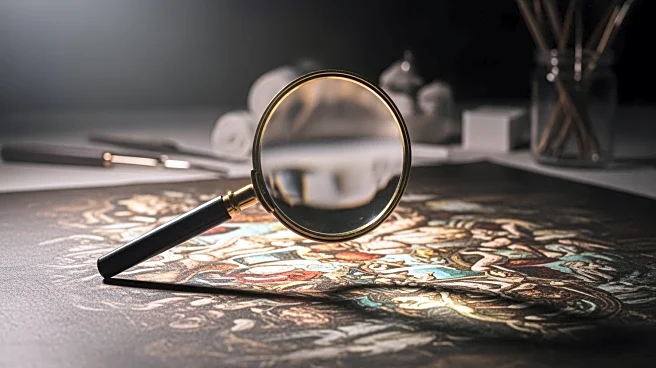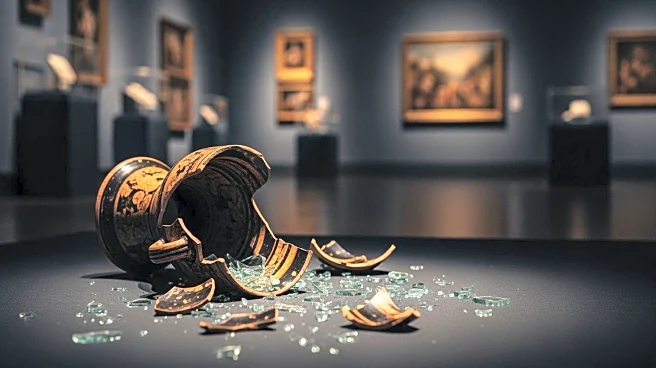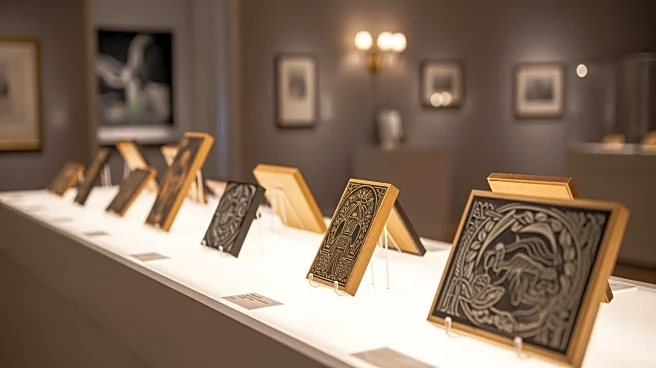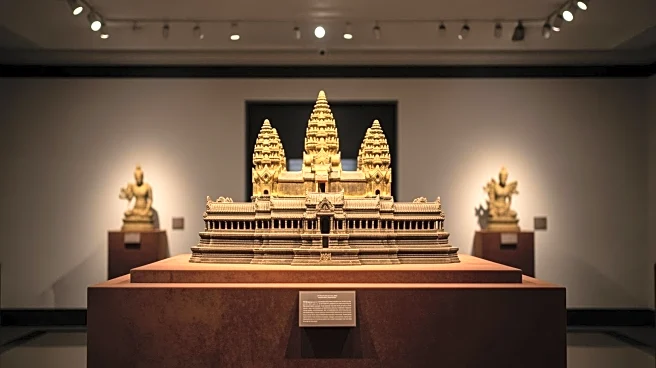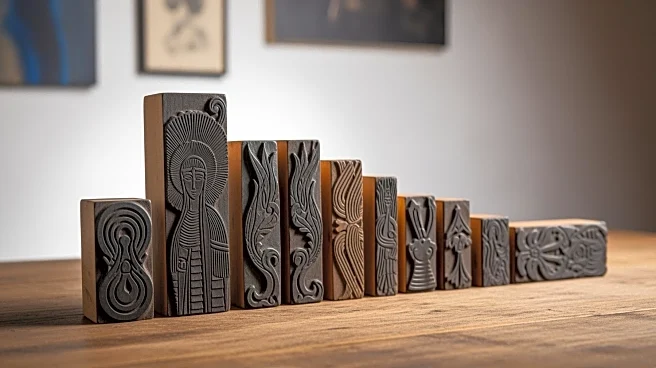What's Happening?
The Brooklyn Museum is currently showcasing 'Seydou Keïta: A Tactile Lens,' the largest North American exhibition of the renowned African photographer's work. Curated by Catherine E. McKinley, the exhibition features nearly 300 photographs, many of which
have never been displayed before, along with Keïta's personal belongings, including vintage cameras. Seydou Keïta, born in Bamako, Mali, during French colonial rule, became a prominent photographer despite restrictions on photography by Africans at the time. His work captures a wide array of subjects, from government officials to everyday citizens, reflecting the cultural and social dynamics of Mali's rising middle class during the mid-20th century.
Why It's Important?
This exhibition is significant as it highlights Seydou Keïta's unique contribution to photography and design, offering a new perspective on African art and culture. Keïta's work is celebrated for its intricate patterns and cultural richness, providing insight into the historical context of Mali during a period of political change. The exhibition not only honors Keïta's legacy but also brings attention to African photography as a vital part of global art history. It underscores the importance of preserving and showcasing African cultural heritage, which has often been overlooked in Western art institutions.
What's Next?
The exhibition is part of a broader movement to recognize African photography, with other significant shows planned, including a large retrospective at MoMA. This increased visibility is expected to elevate the status of African photographers and encourage further exploration and appreciation of their work. The exhibition may also inspire other institutions to delve into underrepresented art forms and cultural narratives, fostering a more inclusive art world.
Beyond the Headlines
The exhibition raises questions about the ownership and representation of African art. With many of Keïta's works held in Western collections, the show highlights the need for collaboration between African and Western institutions to ensure that African art is accessible and accurately represented. It also emphasizes the role of private collectors and family archives in preserving cultural heritage, suggesting that some of the most valuable pieces may reside outside traditional museum settings.
